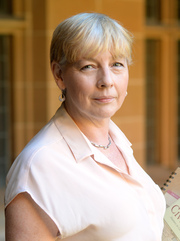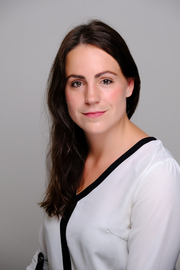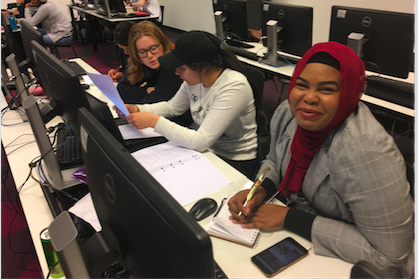Our visit to the Sydney Jewish Museum this week has reminded me of how significant history museums have been in the development of my own passion for history. Being responsible for the preservation and education of history, especially to those outside the field of academia, I found myself drawn to these organisations in the beginning stages of this project. I remember looking forward to school excursions to museums and looking back I am so appreciative for the opportunities we are given throughout our schooling to engage with iconic and innovative exhibitions. Technological advancements and developments in historical practice have seen the evolution of these exhibitions, and I was surprised to see how much the SJM has reinvented itself. Reflecting on my experience of other museums, I realised that not all organisations have the opportunity or resources to do this.
The Pioneer Park Museum in Griffith (570 km south-west of Sydney) is an open-air museum responsible for the preservation of the agricultural, social and cultural heritage of Griffith – a major city in the Murrumbidgee Irrigation Area of the Riverina region of New South Wales.

The site occupies 11 hectares of bushland, and houses a variety of original and recreated buildings from the surrounding area from the early to mid 1900s, as well as the Italian Museum and Wine Building, which appear as more traditional museum exhibitions. The park is also home to annual cultural events, such as Action Day (held over the Easter long weekend) and Festa Della Salsicce (The Festival of the Sausage), where the Italian heritage of Griffith is celebrated with the tasting and judging of a selection of homemade salami’s.



Above (From top to bottom): The St. James Church of England (built in 1907) which is the oldest church in the Murrumbidgee Irrigation Area, A reconstruction of Griffith’s first general store and The Italian Museum.
I have been in contact with Bonnie Owens since early August, She is the curator at the museum and a history major from ANU. She is not only responsible for the management of the above events, but also the organisation of educational programs, historiographical projects and the overall maintenance of the site with only two staff being permanently employed alongside her.
Griffith and its history are particularly significant for me, with my great-grandmother migrating directly to the town from Italy in the late 1950s. Beyond my personal interest, the agricultural production in Griffith functions as a major contributor to the country’s economy. The town produces over 75% of NSW’s wine grapes and is Australia’s largest citrus producing region.

Above: Citrus Sculptures from the Griffith Spring Fest
Bonnie has been very interested in our collaboration since our initial contact. Her suggestions for project ideas have included:
1. Walking Tour App: Using the program “Izi Travel” or something similar, Bonnie would like to create an app that functions as a guided walking tour of the site, easily accessible by visitors using their iPhone. This app uses location services to trigger audio recordings and written descriptions in areas of the site which are of significance, such as buildings or exhibitions. This app is widely used internationally, and also functions as an audio guide to our own Macleay Museum at USYD!
2. Interviews: Bonnie noted that the museum houses various items which are lacking vital information that is required for their exhibition. This would involve contacting the donors of the items and enquiring about their nature, origin and historical significance.
3. Documentary: Bonnie said that she would also appreciate a documentary-style series of interviews capturing the life of cultural groups such as ‘the women of Griffith’ or ‘the farmers of Griffith.’
Despite the challenges involved with working with an organisation long-distance, I am thoroughly looking forward to working with a fellow history major at the service of a community with a really rich and valuable history. A trip which I have organised for the mid-semester break will help me to get going on this project, gain some insight into my own heritage and develop my own historical practice for what may be a future career.
website: www.griffithpioneerpark.com.au
instagram: @griffithpioneerparkmuseum
facebook: www.facebook.com/PioneerParkMuseum

Month: August 2018
Teaching Commendations
The Department is very pleased to note that two more of our colleagues received Teaching Commendations for their outstanding work last semester – including one of our most senior Professors in the Department, as well as one of our most recent PhD recipients.
Professor Penny Russell received a Dean’s commendation for her work on Convicts and Capitalists.
Dr. Ben Vine received one for his outstanding teaching on the unit, HSTY 2666: American Revolutions.
It should be noted that this was the first time Ben coordinated and taught a full unit, and he started the course about three days after he submitted his PhD!
Like Sophie Loy-Wilson’s recent commendation, both Ben and Penny’s Unit of Study Survey (USS) data showed that their score on the USS item relating directly to student satisfaction of teaching effectiveness was in the top quartile of the School’s performance. In addition, Ben and Penny’s focus on student feedback and engagement was also in the top quartile.
As the Dean, Annamarie Jagose, notes:
“This very positive student perception of teaching impact places your unit in the upper tier of units of study offered by the School and indeed Faculty. Given the high standards we set for ourselves, this is an outstanding achievement.”
“Just as we celebrate excellence in scholarship and research, so should we acknowledge the commitment, expertise and outcomes of our foremost teachers. On behalf of all our colleagues, please accept my personal congratulations and thanks for your exemplary contribution to the Faculty’s educational mission. Your success in fostering a positive learning environment within and beyond the classroom is critical to our success as a Faculty and University.”
Well done, Ben and Penny. Terrific work.

History Beyond the Classroom 2018
A new year of HSTY 3902: History Beyond the Classroom is under way in semester 2. With one of the highest enrolments yet, the unit is doing well along with its capstone counterparts HSTY 3901 and HSTY 3903.
History Beyond the Classroom aims, in part, to answer the perennial question, “what can you do with a history degree?” Plenty, it seems. In this unit, students frame, research and produce an original project based on an engagement with communities and organisations outside the University. Students explore history in action in a variety of contexts and think about different ways of creating and disseminating history that will interest and inform a public audience. Lectures and field trips also help frame relevant community-based questions, adopt appropriate methodologies, and explore new ways of presenting your arguments or narratives.
In addition to making history, students will be introduced to a variety of public history professionals, and different kinds of projects that you can pursue part-time or full-time well beyond your University career.
In the first few weeks of the unit, we have spent time exploring what turned out to be difficult questions about just what is history, and why do we do it? We’ve also begun to look at questions about audience, and about how different people think historically.
Last week, in week 3 of the semester, we also had a visit from one of our favourite public historians, Mark Dunn.
PHA-NSW & ACT Chair, Dr. Mark Dunn on Public History
Currently the Chair of the Professional Historians Association of NSW (PHA-NSW; http://www.phansw.org.au/), Mark’s career as a professional historian embodies the challenges and opportunities of public history.
After studying history at UNSW, Mark did some volunteer work on an archaeological site in Sydney, which led to a paid job as a historian for a heritage and archaeology firm in Sydney, where he worked until 2010. During that time he was involved in major conservation, archaeology (including digging), oral history, significance and interpretation projects Australia wide. Some of these include doing Oral History for the Cockatoo Island Navy Dockyard, the moving of Prince of Wales Destitute Childrens Asylum Cemetery, The Big Dig in The Rocks and numerous smaller histories. Mark has been a member of the Professional Historians Association since c1997 and is currently the Chair. He has also been a committee member and President of the History Council NSW and is currently Deputy Chair of the NSW Heritage Council. Mark now works as a consultant historian in heritage and research, as well as leading city tours for an American tour company Context Travel. He is also the current CH Currey Fellow at State Library of NSW, and recently completed his PhD at UNSW.

Some of the many clocks in the collection of Sydney Trains at Central Station
Mark talked to students about the crucial role played by the PHA-NSW, and also the challenges of doing public history, which included negotiating any conflicts of interest, managing expectations, juggling tight budgets and deadlines, and the disappointments resulting from not having control over the final product, sometimes with the result that your work gets buried (sometimes literally).
An unexpected find at the Mick Simmons site at George Street 2013. After excavating and archiving this early colonial pub, the site was completely removed. Recording and archiving such sites before they are completely obliterated is just one of the many kinds of projects Mark Dunn has worked on.
Drawing from his extensive experience, Mark also reflected on why he enjoys being a professional historian, which included the opportunity to work on many and varied history projects, bringing history to a wide range of audiences who often have a real connection with the past that is being presented, and seeing your work on public display, whether it be on television, radio, the side of a building, the wall of a pub, or the web.
Mark also noted his most recent public history project for Sydney Trains Heritage NSW (http://www.sydneytrains.info/about/heritage/), the beautifully produced pamphlet called “Running on Time: Clocks and Time-Keeping in the NSW Railways” (you can download a copy at: www.sydneytrains.info/about/heritage/201602-Running-on-time-Report.pdf). There is also an accompanying short film featuring interviews with railway workers and heritage experts involved in the project (http://www.sydneytrains.info/about/heritage/oral_history). Mark revealed that he completed his report in about four weeks of full-time work, giving students something to aspire to….
Mark was an engaging speaker, and the students (and I) were clearly amazed at the breadth and depth of his work.
Mark’s talk and the readings this week about public history helped students reflect on the practice of history in the University and classroom, which often (though not always) precludes these kinds of negotiations about different kinds of understandings about the past, and present uses (though students were also quick to point out that there is a growing group of academic historians willing to engage with different public audiences, and indeed, there always has been). Our reading this week about the Enola Gay controversy in the United States in the early 1990s reinforced the dangers of not doing so, but also how difficult it might be to do so. Once again, and with the help of Anna Clark’s great interviews, in Private Lives, Public History, our discussions – and students’ reflective diary entries – invariably shifted to the History Wars in Australia and both the indifference of many to the history wars, but also the more subtle ways in which many non-professional historians understand “contest” in history. Reflections also ranged across questions about whether there is a historical middle ground between commemoration and historical analysis? Could the Enola Gay Exhibition controversy have been avoided?
Teaching Commendation
Many congratulations to Sophie Loy-Wilson who earned a Dean’s Commendation for her outstanding teaching in her Semester 1 2018 unit, HSTY2701 – Spies in the Archive, based on student evaluations.
Sophie’s Unit of Study Survey (USS) data showed that her score on the USS item relating directly to student satisfaction of teaching effectiveness was in the top quartile of the School’s performance. In addition, Sophie’s focus on student feedback and engagement was also in the top quartile.
As the Dean, Annamarie Jagose, notes:
“This very positive student perception of teaching impact places your unit in the upper tier of units of study offered by the School and indeed Faculty. Given the high standards we set for ourselves, this is an outstanding achievement.”
“Just as we celebrate excellence in scholarship and research, so should we acknowledge the commitment, expertise and outcomes of our foremost teachers. On behalf of all our colleagues, please accept my personal congratulations and thanks for your exemplary contribution to the Faculty’s educational mission. Your success in fostering a positive learning environment within and beyond the classroom is critical to our success as a Faculty and University.”
Many congratulations, Sophie!
Mike M.

History on Wednesday Department Seminar
History on Wednesday
Seminar Series for Postgraduates and Faculty
Held at 12.10-1.30
in Woolley Common Room, Woolley Building A22
(Enter Woolley through the entrance on Science Road and climb the stairs in front of you. Turn left down the corridor, and the WCR is the door at the end of the hall)
Click here for more details
Coordinators:
Dr Andrés Rodriguez and Professor Kirsten McKenzie
Semester 2 2018
1 August
Deborah Cohen (Northwestern University)
The Geopolitical is Personal: American Foreign Correspondents, India and the British Empire in the 1930s and 1940s
15 August
Andrew Fitzmaurice (University of Sydney)
Hobbes, democracy and the Virginia Company
22 August
Charlotte Greenhalgh (Monash University)
Women and Social Research in Australia, 1940-1970
12 September
Hélène Sirantoine (University of Sydney)
The Saint and the Saracen: Iberian hagiographical material and Christian perceptions of Islam in the Middle Ages
3 October
Chin Jou (University of Sydney)
Food and Power in American prisons in the mass-incarceration era.
17 October
Catie Gilchrist (University of Sydney)
Call the Coroner! Investigating Sudden Death in Colonial Sydney
31 October
Laura Rademaker (Australian Catholic University)
Found in translation: language and translation in Aboriginal history

Social Inclusion program day – Essay Writing
Last Friday the 27th of July thirty students from Granville Boys and Miller Technology high schools came to campus for their last mentoring session. The students met their volunteer mentors at 10am, heading to Fisher library for a full day of working on their major essays (interrupted only by a short break to refuel with some pide). The students and mentors have been working together for a total of five sessions now (some relationships have sustained three topic changes, thanks to the patience of our mentors!). The students are kept with the same mentors to assist the building of strong relationships, and many students and mentors keep in contact via email between visits to sustain the academic relationship. For the high school students, the academic relationship with their university mentor may be the only relationship they form with a university student during their school experience. This is important in opening up the possible future opportunities these students perceive are available to them.
Most students are well into the process of writing their essays now, which will be submitted in the next fortnight. Followed by an presentation day in the end of August.


More to come!
